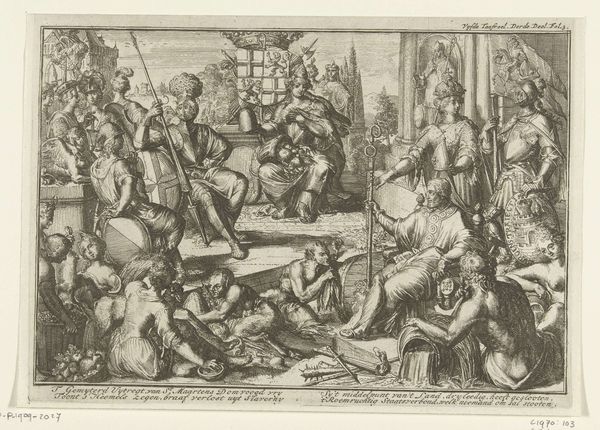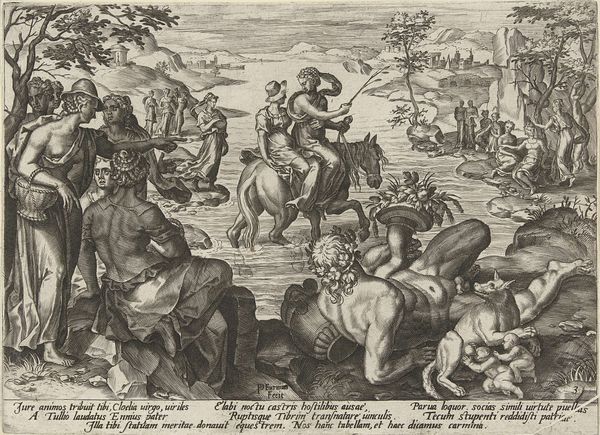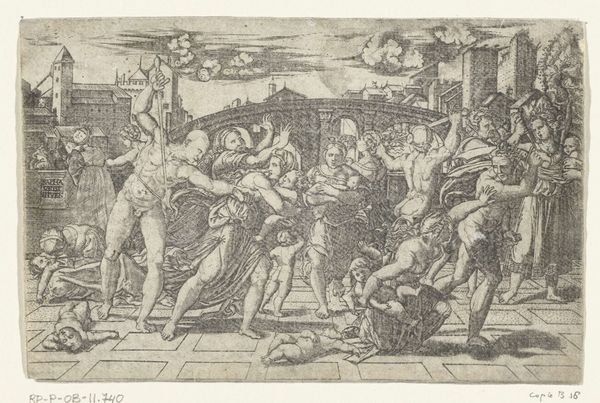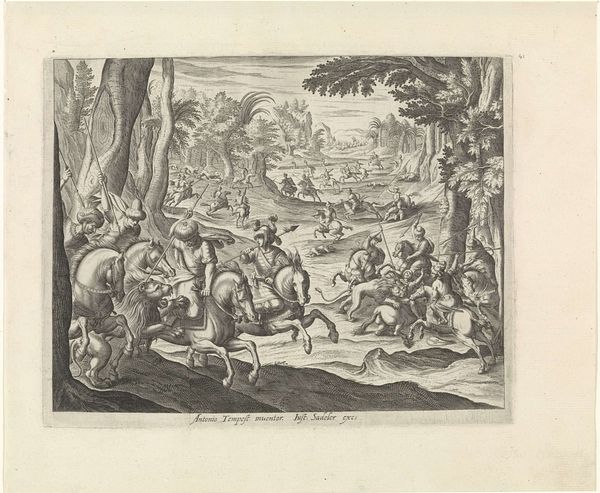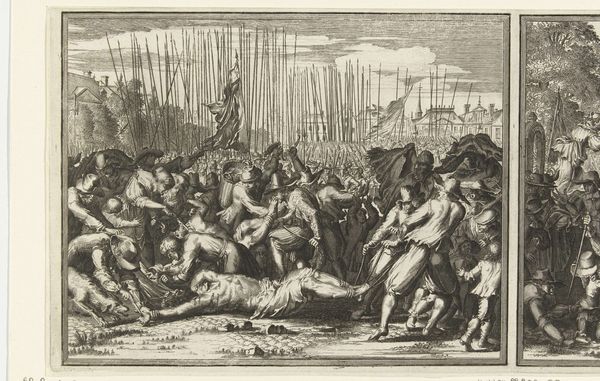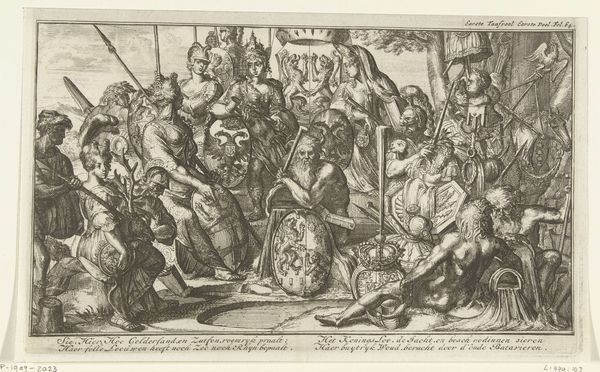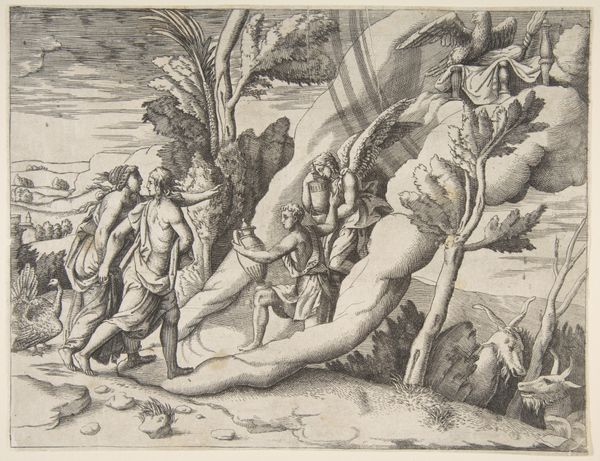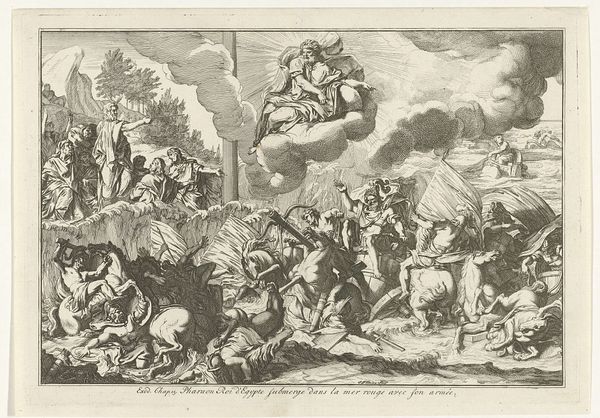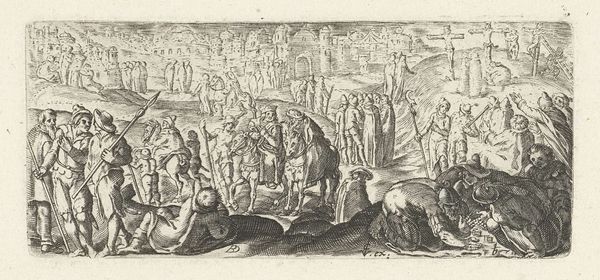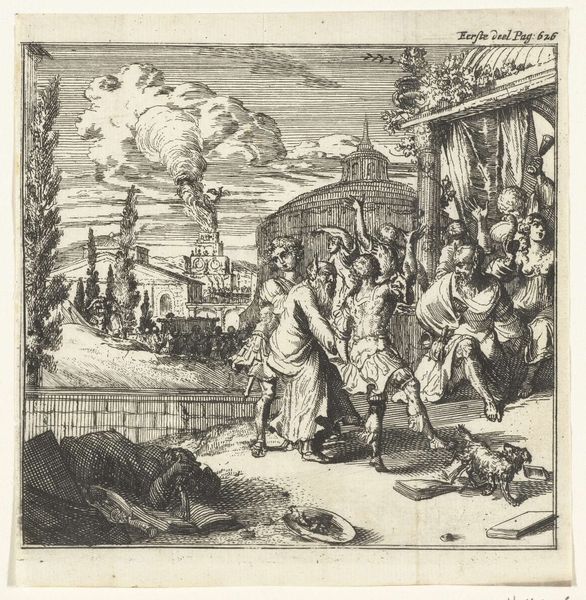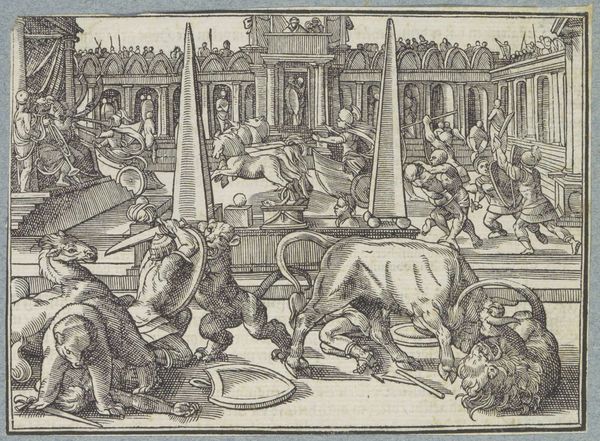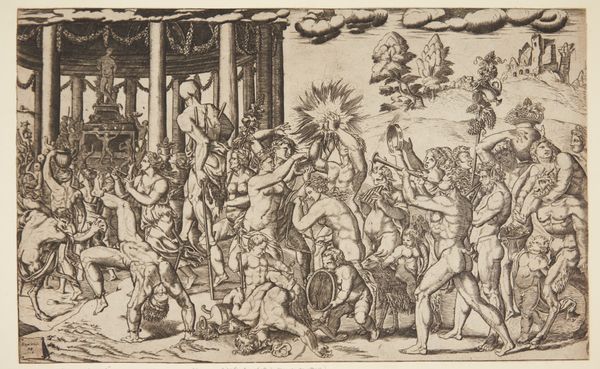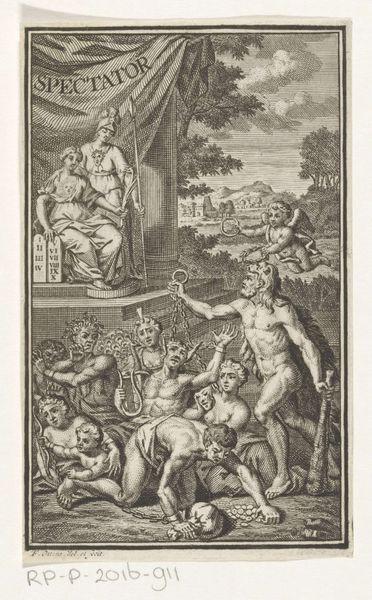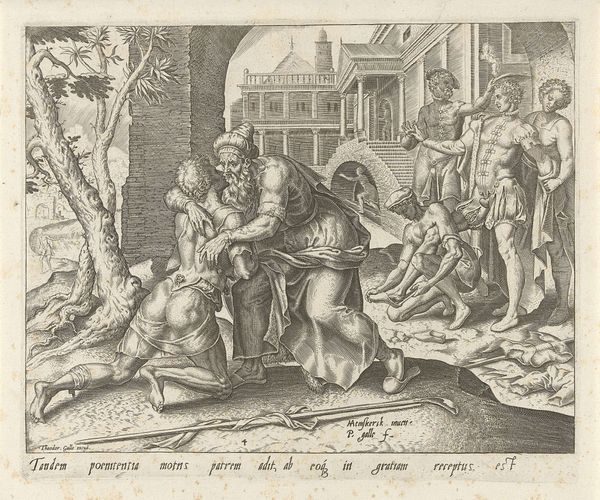
print, engraving
#
baroque
# print
#
figuration
#
history-painting
#
engraving
Dimensions: height 117 mm, width 126 mm
Copyright: Rijks Museum: Open Domain
Curator: At first glance, the overall impression of the print is one of tightly packed, dynamic chaos, heightened by a rather uniform tone across the picture plane. Editor: Today, we are observing "Romans Bringing Various Offerings", an engraving made in 1672 by Romeyn de Hooghe, now residing here at the Rijksmuseum. The historical context behind de Hooghe's piece provides a significant entry point to interpreting its complex narrative. During the Dutch Golden Age, such images not only depicted historical or mythological scenes but also served as political allegories, often reflecting on contemporary events and power structures. Curator: Focusing on form, consider how the artist utilized line to differentiate textures. We see fine, parallel lines create the smooth drape of fabrics, while short, erratic strokes build the rugged texture of animal fur. There’s a compelling juxtaposition of detail and density across the composition. Editor: Indeed. Look at the way the ritualistic sacrifice is depicted, with the focus on wealth, the dead animal, and enslaved people at the foot of the imperial shrine. De Hooghe comments on the cost of imperialism, of wealth being built at the expense of subjugated bodies, in war, labor, and religious subjugation. Curator: I'm drawn to how De Hooghe creates spatial depth. Notice the tiered arrangement, moving from the chaotic foreground of sacrificial animals to the structured elevation of the figures and architecture behind. There's a palpable contrast between the earthly sacrifice and the idealized figures. Editor: And considering the date of its creation, it is important to contextualize it within the history of Dutch imperialism, thinking about how these kinds of images functioned in the history of ideas. In the context of contemporary theory, it’s essential to acknowledge how art can be both a product and a perpetuator of colonial ideologies. Curator: A fascinating piece offering, I think, different avenues for understanding through careful analysis of the image itself. Editor: Absolutely. De Hooghe gives us a window into the complex intersections of power, sacrifice, and representation during a critical juncture in European history.
Comments
No comments
Be the first to comment and join the conversation on the ultimate creative platform.
